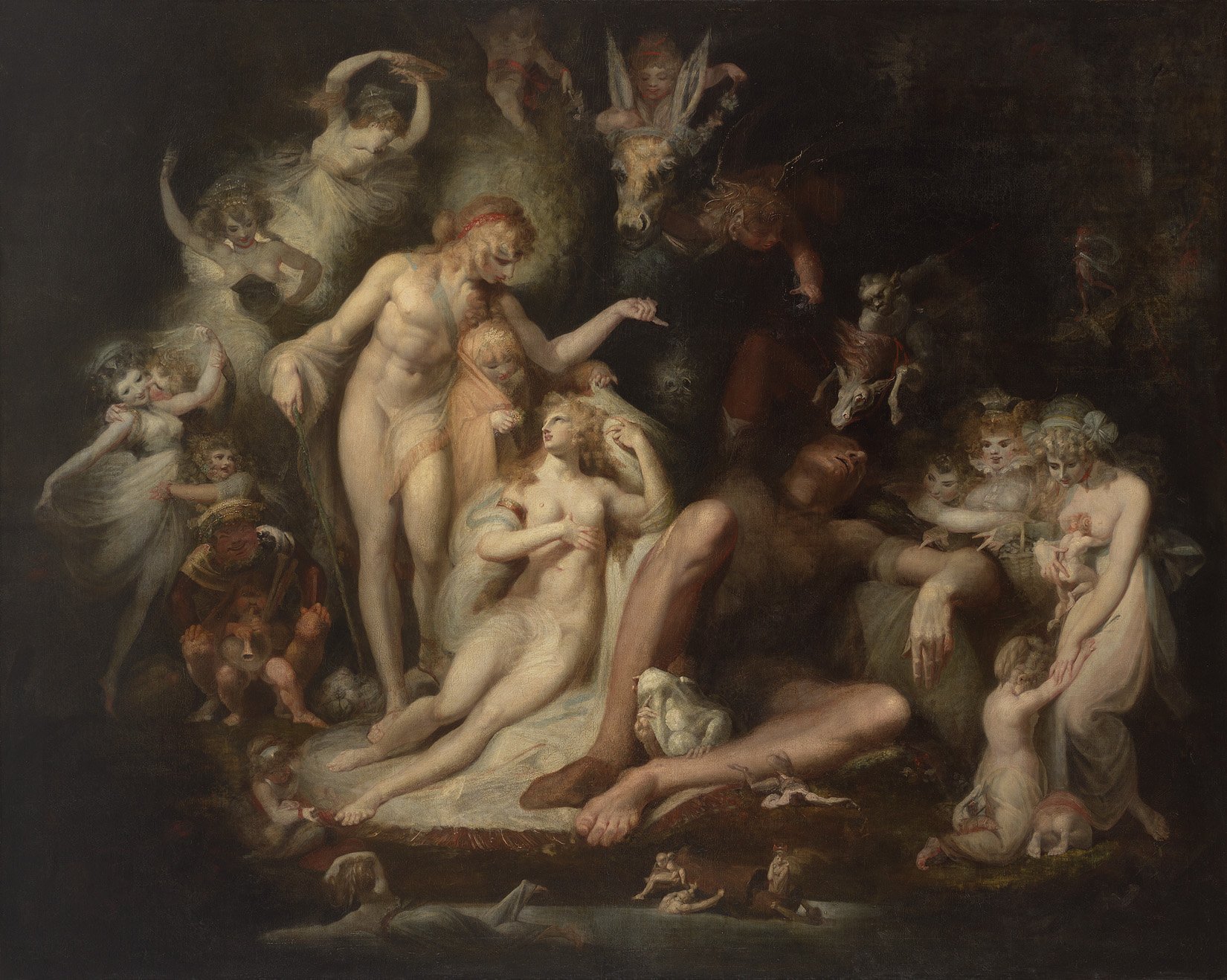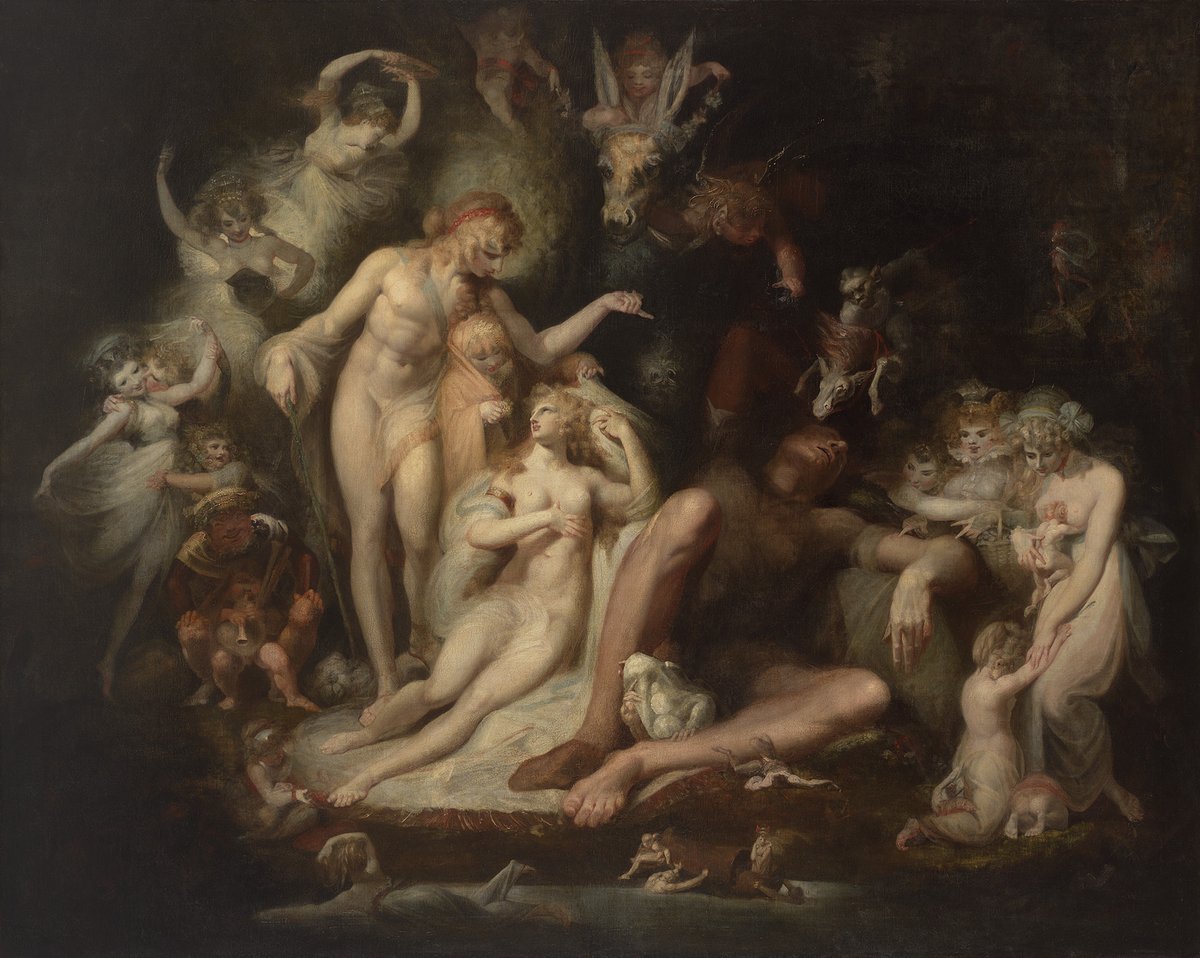Johann Heinrich Füssli
Titania’s Awakening [or: The Awakening of the Fairy Queen Titania], circa 1786/1790

Johann Heinrich Füssli
Titania’s Awakening, 1786-1790
Kunst Museum Winterthur, Jubiläumsgeschenk von Georg Reinhart, 1946
Foto: SIK-ISEA, Zürich (Martin Stollenwerk)
When the Zurich citizen Johann Heinrich Füssli was asked to illustrate Shakespeare’s plays around 1786, he was already a star in London, where he had been living for a long time, calling himself Henry Fuseli. Just like today, in those days people enjoyed telling crazy stories about celebrities. It was reported that Fuseli ate bloody pork before going to bed and consumed a lot of opium to conjure up his dark visions. On top of that, he cursed constantly in Swiss German. These rumours fit in with the art of the spirited and highly educated painter, who was known in England as «the wild Swiss» and whose fantastical paintings contributed significantly to the image of the English Gothic movement.
Fuseli accepted the Shakespeare commission and created a total of five paintings for A Midsummer Night’s Dream, whereby ours, Titania Awakes, is the largest and richest in figures, making it one of his major works. At the centre of the painting we see Titania and Oberon, queen and king of the realm of the fairies. Until shortly before this scene, the couple lived apart. Here we see them reconciling. The human child, over whom they had been quarrelling, can be seen between them. It wakes up Titania, who had just been snuggling up to the immense, lascivious Bottom on her right.
Fuseli added a whole array of characters to this central group of characters, who add to the content and at the same time enhance it aesthetically. All kinds of playful and awkward creatures dance and make music throughout the picture. Some of them belong to Titania's court, others to Oberon’s. But we also find demonic creatures, the products of Fuseli’s boundless imagination, haunting the semi-darkness of the right half of the picture.
Light and dark intermingle here, fairies and demons are juxtaposed, as are the differently designed bodies of the figures – animal forms on the one hand, antique classicism on the other. With virtuosity, Fuseli mixes the gallant with the burlesque, and the mythological with elements of popular belief. These contrasts fit the theme of the picture itself, because this fairy kingdom is actually invisible, but at the same time a guiding force in the background. The invisible is made visible, the hidden and uncanny appear. In this way, we gain an insight into the normally hidden depths of human behaviour.

Johann Heinrich Füssli
Titania’s Awakening, 1786-1790
Kunst Museum Winterthur, Jubiläumsgeschenk von Georg Reinhart, 1946
Foto: SIK-ISEA, Zürich (Martin Stollenwerk)


